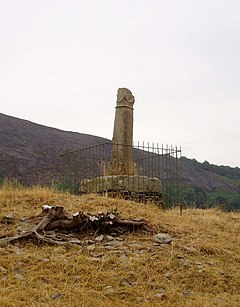 Archaeologists are launching a new dig to try to unearth the secrets of a 9th Century stone monument on a prehistoric mound. See BBC news story here:
Archaeologists are launching a new dig to try to unearth the secrets of a 9th Century stone monument on a prehistoric mound. See BBC news story here:http://www.bbc.co.uk/news/uk-wales-north-east-wales-14774061
From Wikipedia: The Pillar of Eliseg also known as Elise's Pillar or Croes Elisedd in Welsh, stands near Valle Crucis Abbey, Denbighshire, Wales, at grid reference SJ204442. It was erected by Cyngen ap Cadell (died 855), king of Powys in honour of his great-grandfather Elisedd ap Gwylog. The form Eliseg found on the pillar is thought to be a mistake by the carver of the inscription.
The Latin inscription not only mentions several individuals described in the Historia Britonum, but also complements the information presented in that text. A generally accepted translation of this inscription, one of the longest surviving inscriptions from pre-Viking Wales, is as follows:
- † Concenn son of Cattell, Cattell son of Brochmail, Brochmail son of Eliseg, Eliseg son of Guoillauc.
- † And that Concenn, great-grandson of Eliseg, erected this stone for his great-grandfather Eliseg.
- † The same Eliseg, who joined together the inheritance of Powys . . . throughout nine (years?) out of the power of the Angles with his sword and with fire.
- † Whosoever shall read this hand-inscribed stone, let him give a blessing on the soul of Eliseg.
- † This is that Concenn who captured with his hand eleven hundred acres [4.5 km²] which used to belong to his kingdom of Powys . . . and which . . . . . . the mountain
- . . . the monarchy . . . Maximus . . . of Britain . . . Concenn, Pascent, Maun, Annan.
- † Britu son of Vortigern, whom Germanus blessed, and whom Sevira bore to him, daughter of Maximus the king, who killed the king of the Romans.
- † Conmarch painted this writing at the request of king Concenn.
- † The blessing of the Lord be upon Concenn and upon his entire household, and upon the entire region of Powys until the Day of Judgement.



No comments:
Post a Comment